Introduction
Fiber optic amplifiers are used to amplify optical signals without converting the signal into electrical signals back and forth. In this article, we’ll be discussing the fiber optic amplifiers, how they work and their market price.
What is a Fiber Optic Amplifier?
Optical fiber networks use strands of specially designed, transparent fiber to transmit signals as light pulses. Often, these signals fall in the infrared spectrum (850, 1300 and 1550 nanometers) which provide lowest attenuation characteristics in the fiber. This falls in the range of less than 0.2dB per kilometer for a 1550 nanometer band, which is much lower than its electrical counterpart.
However, no signal is completely immune to attenuation. Therefore, when a signal travels through a fiber optic cable, it tends to weaken over long distances. For example, when the fiber cable length exceeds 10km, the transmission loss adds up to a significant amount. When the length becomes much higher, the signal gets exponentially weaker.
Fiber optic amplifiers help mitigate this problem by boosting the signal when it gets weak.
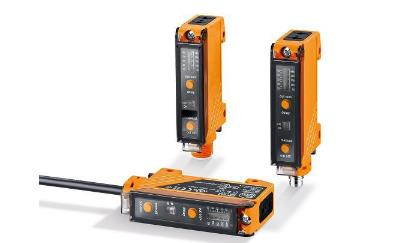
Fiber optic amplifiers (also known as Optical Fiber Amplifiers) amplifies the optical signal without converting it into an electrical signal. This is very important since if the signal was to be converted to electrical signal beforehand to amplify, the propagation delay between optical -> electrical -> optical conversion will be much higher. Fiber optic amplifiers skip the intermediary conversions and amplify the optical signal directly.
There are three major types of fiber optic amplifiers:
- EDFA (Erbium-doped Fiber Optic Amplifier)
- FRA (Fiber Raman Amplifier)
- SOA (Semiconductor Optical Amplifier)
Let’s have a look at how these amplifier types work to amplify a weak optical fiber signal.
How Do Fiber Optic Amplifiers Work?
Let’s start with the EDFA, one of the earliest yet more robust fiber amplifier designs that is in use to the date.
EDFA – Erbium Doped Fiber Amplifier
Erbium Doped Fiber Optic Amplifiers are the most commonly used fiber optic amplifiers found today. They can be used in multiple stages of a fiber optic network as
- A Booster
- Inline amplifier
- Pre-amplifiers.
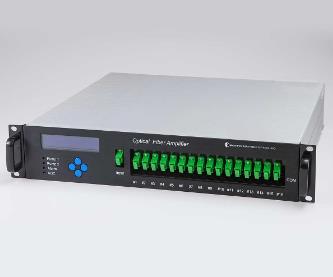
When used as a pre-amplifier, the EDFA is placed just before the receiver. When placed in the middle of a transmission line to strengthen the signal, it is being used ‘inline’ with the optics. An EDFA placed right after the transmitter is called a ‘booter’ that boosts the signal to be fed into the optical link.
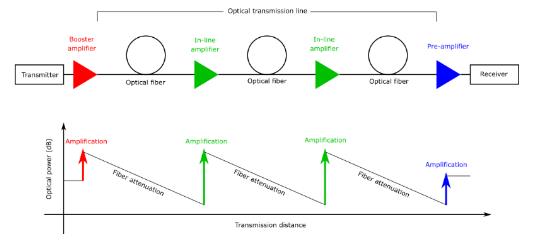
EDFA amplifiers work by first ‘pumping’ 980nm or 1480nm laser light into the Erbium doped into the fibers. This excites the ions into excited states 2 or 1 respectively, as shown in the image below. Excited state 1 is the more stable band therefore electrons excited by the 980mm laser falls back into excited state 1 by emitting heat (without any photons) and stabilizing.
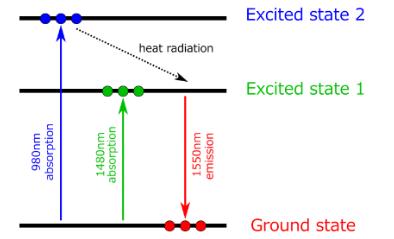
When an incoming signal is coupled with these excited electrons, the signal stimulates the electrones to go into ground state by releasing energy stored in them as photons. Both these emitted photons and the optical signal are in 1550nm of wavelength therefore the incoming signal is amplified multiple times. These signals are called ‘coherent’ (same wavelength, frequency and phase) signals which makes the amplification possible.
Fiber Raman Amplifier
Raman Amplifier is also another popular type of fiber optic amplifier. These amplifiers use a phenomenon called ‘Stimulated Raman Scattering’ to amplify the optical signals.
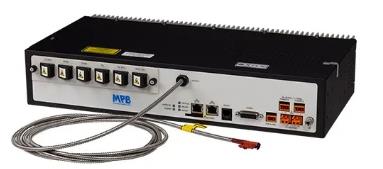
Fiber optic mediums are made of crystal/glass lattices. When a light signal propagates through such a lattice medium, the traveling speed is nonlinear and can be observed as non-instantaneous. This is caused by the vibrations occurring in the lattice structure when the signal propagates.
By exploiting this phenomenon, a longer wavelength beam (called Stokes wave), which is the actual signal to be amplified, can be amplified at the expense of a shorter wavelength beam. In order for the longer wavelength signal to be amplified, the other signal has to be of the same polarization, same direction and passed through a Raman-active medium. This can be a bulk-crystal, waveguide or a photonic-integrated-circuit or a cell with a gas or liquid medium.
The image below shows a Raman amplifier’s operation principle.

The pump and signal beams at frequencies ωp and ωs are injected into the fiber strand through a fiber coupler. During the amplification process, a pumped photon releases its energy to create another photon that has reduced energy. The excess energy is absorbed by the fiber material in the form of molecular vibrations. This vibration energy is then transferred into the original signal, co-propagating with the pump beam.
Unlike Erbium doped amplifiers, Raman amplifiers generally do not need rare-earth ion doped material. However, there are special fibers that have increased Raman Gain that have higher performance than regular single-mode-fibers.
Semiconductor Optical Amplifier
Semiconductor optical amplifiers use semiconductors as the gain medium to amplify an optical signal. Essentially, SOA is a fiber-coupled laser diode that has the end mirrors replaced with antireflective coatings.
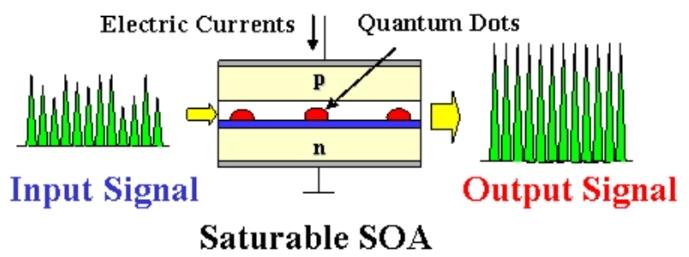
In a SOA, the light signal is amplified in a single-pass when traveling between two semiconductor materials. This is the active region and acts similar to a laser but without the feedback and multiple-passes required in EDFA.
SOAs have two primary regions, active and passive. When the signal passes through the active region, the electrons in the active region lose energy (as photons) and reach the ground state. These excited photons have the same wavelength as the signal itself and the same phase. Therefore, this phenomenon amplifies the origins signal as it leaves the active region.
SOA amplifiers are the most economic type of fiber optic amplifiers due to the less complexity involved in manufacturing.
Fiber Optic Amplifier Price
When it comes to pricing, fiber optic amplifiers costs vary depending on the number of channels and the technology used. Typically, EDFA amplifiers cost from $400 to $3000. The cheapest type, SOA amplifiers cost from $150 onwards.
Conclusion
Similar to networks that use electrical signals, optical networks also suffer from signal degradation over long distance links. With the use of the correct optical amplifier at correct distance, the signal degradation can be minimized and the bandwidth can be improved over long distances.